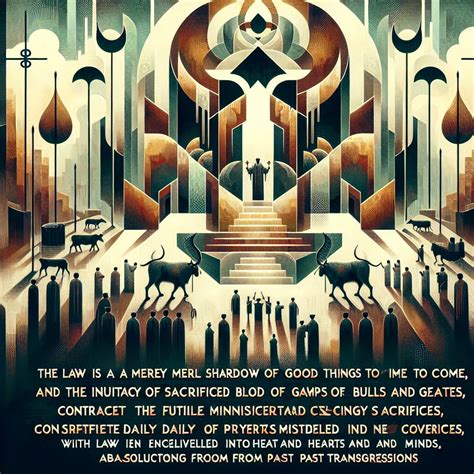Throughout history, humanity has sought ways to express the ineffable beauty and depth of its religious beliefs. Within this context, the visual representation of divine figures has gained extraordinary significance, enabling individuals to connect with the divine through art. One such example is the powerful representation of Jesus Christ in sacred icons.
Embodying timeless values and virtues, Jesus Christ is depicted in icons as an embodiment of love, compassion, and salvation. These sacred images utilize a unique array of symbols and motifs that allow the faithful to engage with the divine in a profound and transformative way. By employing subtle nuances and intricate details, icons convey spiritual messages that speak directly to the heart and soul.
Unlike mere portraits or illustrations, the representation of Jesus Christ in icons transcends the limitations of physical appearance. Instead, the focus lies in capturing the essence of his teachings and his ongoing presence in the lives of believers. Through the use of sacred symbols, such as the halo of divine light or the outstretched arms symbolizing love and acceptance, icons encapsulate the profound spirituality and timeless wisdom associated with Jesus Christ.
The Significance of Sacred Images in Christian Worship

In the context of exploring the symbolism of the central figure of Christianity, Jesus Christ, it is essential to acknowledge the powerful impact of sacred images in Christian worship. These visual representations hold a vital role in the religious practices and devotional traditions of believers, playing a significant part in their spiritual journey. By using artistic and symbolic elements, icons convey profound theological and spiritual truths in a visually captivating manner.
- 1. Aesthetic Vessels of Transcendence
- 2. Mediators of Divine Presence
- 3. Visual Narratives of the Faith
Icons can be considered as aesthetic vessels through which believers can experience a sense of transcendence. These sacred images go beyond mere representations and serve as portals to a spiritual realm, facilitating a deeper connection with the divine. By gazing upon the intricate details and expressive features of these icons, individuals are invited to participate in a divine encounter and contemplate profound mysteries.
Icons serve as mediators of the divine presence, providing a tangible and accessible means through which believers can approach and communicate with God. The purposeful placement of these sacred images in churches and personal spaces encourages a sense of reverence and devotion, inviting individuals to enter into a state of prayer and contemplation. In this way, icons play an integral role in facilitating the spiritual journey of believers and cultivating a deeper understanding of their faith.
Icons also function as visual narratives, recounting the stories and teachings of Christianity in a powerful and relatable manner. Through the skillful depictions of key events and figures in the life of Jesus Christ and other important biblical stories, icons offer a visual language that communicates theological truths without the need for words. These symbolic representations create a connection between the viewer and the narrative, enabling a deeper comprehension of the faith and fostering a sense of awe and inspiration.
In conclusion, icons hold a significant role in Christian worship by serving as aesthetic vessels, mediators of divine presence, and visual narratives of the faith. Through these sacred images, believers are able to forge a meaningful connection with the divine, deepen their understanding of their faith, and engage in a profound spiritual dialogue. The use of icons in worship elevates the religious experience, offering a visual language that transcends words and cultivates a sense of reverence and awe.
Exploring the Deep Significance of Jesus Christ's Representation in Sacred Portraits
Delving into the profound significance encased within the age-old portrayals of the divine figure, these sacred images offer a wealth of symbolic language that speaks to the essence of Jesus Christ's identity and message. By means of symbolic representations manifested through artistic renderings, these icons unveil a deeper understanding of the revered spiritual figure, transcending mere visual representations to communicate profound spiritual truths.
Interpreting the Divine Representation

The theological depth of icons depicting the sacred figure is of paramount importance and contributes significantly to the understanding and appreciation of religious art. Exploring the profound symbolism inherent in these depictions allows for a deeper insight into the divine message they convey, transcending the limitations of language and words.
Unveiling Multifaceted Meanings
By examining the theological significance of these icons, we uncover layers of meaning that extend beyond the visual representation itself. These symbols encompass a multitude of ideas and concepts, forming a rich tapestry of spiritual insight that elicits profound contemplation and introspection.
Portraying the Divine Essence
The theological significance of these icons lies in their ability to capture the inherent qualities and virtues associated with the divine presence. Through the use of various symbolic elements, such as colors, gestures, and inscriptions, artists skillfully convey theological messages by illustrating the attributes of purity, compassion, and divinity.
Invoking Personal Connection
Beyond their aesthetic appeal, icons serve as powerful tools for fostering a personal connection with the divine. Each icon is a gateway to a deeper spiritual experience, inviting the viewer to engage in a relationship with the sacred figure and access a realm of profound contemplation and spiritual growth.
Examining the Visual Representation of the Divine Qualities Displayed in Sacred Images
Within the realm of divine artistry, depictions of holy beings often transcend explicit identification, employing various visual cues to represent their inherent qualities. In the context of sacred icons representing Jesus Christ, the visual attributes employed serve as powerful symbols, conveying profound meanings without explicitly referencing the figure of Jesus Christ himself.
Exploring the intricate details and symbolic elements present in these sacred images provides us a deeper understanding of the divine qualities embodied by Jesus Christ. The visual representation of these attributes, through subtle symbolism and artistic techniques, invites viewers to engage in contemplation and spiritual reflection.
- 1. Mournful Eyes: Through the use of somber or melancholic eyes, sacred icons evoke the profound empathy and compassion that Jesus Christ exhibited towards human suffering, inviting observers to reflect on the power of forgiveness and understanding.
- 2. Outstretched Arms: The extended arms in sacred imagery symbolize Jesus Christ's eternal presence and his all-encompassing love for humanity, reminding viewers of the unconditional acceptance and grace offered by him.
- 3. Crown of Thorns: The Crown of Thorns adorning depictions of Jesus Christ signifies his sacrifice and ultimate triumph over sin and death. This visual element prompts contemplation on the redemptive power of suffering and the transformative journey of faith.
- 4. Sacred Heart: Often portrayed as a radiant heart encircled by thorns or flames, the Sacred Heart represents Jesus Christ's divine love and his selfless sacrifice for humanity. This symbol invites viewers to ponder the depths of unconditional love and the transformative nature of divine grace.
- 5. Robes of White: The white robes frequently depicted on Jesus Christ in sacred imagery symbolize purity, divinity, and radiant glory. They serve as a visual reminder of the eternal nature of Christ's teachings and the promise of salvation through him.
Examining the visual representation of Christ's attributes in sacred icons provides a profound opportunity for spiritual contemplation and reflection. Each symbol employed in these sacred images invites viewers to explore the virtues and divine qualities represented by Jesus Christ, fostering a deeper connection with the transcendent message of his teachings.
FAQ
What is the significance of Jesus Christ in icons?
The significance of Jesus Christ in icons is profound. Jesus is the central figure in Christianity, and his portrayal in icons serves as a visual representation of his divinity and his importance in the salvation of mankind.
Why are icons of Jesus Christ so prominent in Christian worship?
Icons of Jesus Christ are prominent in Christian worship because they provide believers with a tangible and visual connection to the divine. They serve as a focal point for prayer and contemplation, reminding believers of Christ's presence and teachings.
What are some common symbols used to depict Jesus Christ in icons?
There are several common symbols used to depict Jesus Christ in icons. These include the halo, which represents his divine glory, a cross or crucifix, symbolizing his crucifixion and sacrifice, and the gesture of blessing, which signifies his role as a divine figure and a source of blessing for believers.
How do icons of Jesus Christ convey theological concepts?
Icons of Jesus Christ convey theological concepts through their composition, colors, and symbolism. For example, the use of gold and bright colors represents his divinity, while the inclusion of specific gestures or postures can convey teachings or events from his life, such as the depiction of his resurrection or his role as the Good Shepherd.




